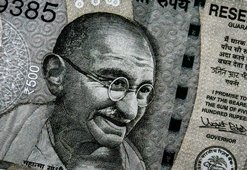Blog
Human Trafficking: The Dark Side of Migration
Human traffickers lure desperate people with promises of a better life, but many of their victims end up in misery, prostitution, or even dead. During the Lab in Nairobi, anti-trafficking practitioners from around the globe met with survivors, listened to their stories and discussed ways to fight this global scourge.
“Man often becomes what he believes himself to be. If I keep on saying to myself that I cannot do a certain thing, it is possible that I may end by really becoming incapable of doing it. On the contrary, if I have the belief that I can do it, I shall surely acquire the capacity to do it even if I may not have it at the beginning.”
– Mahatma Gandhi
I often thought of this quote during the Lab on human trafficking in Nairobi in June 2018, organised by the Global Leadership Academy (GLAC) and the Thomson Reuters Foundation (TRF). The same Gandhian spirit was ever present at this Lab, convincing me from the beginning that I had come to the right place. Just a few hours into the Lab, I observed how passionate everyone was on this issue of human trafficking and what we could do, together, to tackle this scourge.
We were a very diverse group. Among us was an anti-trafficking activist from Kolkata, India; a vocal Tunisian currently doing her Master’s in Germany; a rape survivor who set up her own foundation in Uganda; and senior representatives from the African Union Commission and the Kenya National Commission on Human Rights. It was an amazing network of passionate anti-trafficking practitioners that I would be able to benefit from, not to mention the resources and training provided at the Lab.
We discussed the difference between smuggling and trafficking, the various forms of trafficking vs. child trafficking, and human and organ trafficking. We established that this ugly phenomenon cannot be understood, let alone fought, without examining the root causes that lead people to seek a better life abroad, such as poverty, unemployment and a lack of knowledge about one’s basic human rights.
The GLAC’s and TRF’s excellent facilitators provided media training, including on messaging for campaigns, how to interview trafficking victims and survivors, and effectively leverage social media. Thanks to their facilitation, we identified the complexities inherent in the trafficking situation on the African continent, including the need for credible information sources and the efficient use of facts and data to tell stories. What I found poignant was that several journalists taking part in the Lab requested that their names and identities not be revealed out of fear for their own safety.
The facilitators were candid and provided useful antidotes as well as plenty of examples to counter and check fake news on social media. An interesting point made by Melanie Cheary from the TRF was that it was necessary to fact-check information long before the advent of social media: as an example, she showed us photographs taken during World War Two that were touched up before their publication in newspapers in order to present the desired narrative and influence readers’ emotions.
We also made site visits to Haart, the only NGO working on trafficking in Kenya, as well as to Mathare, a massive slum in Nairobi that is home to around 180,000 people and is one of the biggest informal settlements in the country. The latter, bustling and crowded with poor sanitation, is home to thousands of refugees from Uganda, Tanzania and other African countries. Haart has worked with trafficking victims from as far as Nepalas, as well as those from Burundi, Rwanda and Uganda, and also helped Kenyans who have been trafficked abroad.
We were told about a group of Kenyan women who had been trafficked to Libya and forced to undergo rituals allegedly involving witchcraft. They were told that should they attempt to leave Libya, they would die. One woman became pregnant and fell very ill due to complications. She died as they tried to take her to hospital, making the others fear that witchcraft might also take their lives. The Haart NGO team that had travelled to Libya to counsel these women worked very hard to convince them to return to Kenya, where they now live.
I also met a brave survivor, Tamara from Uganda, who told her story of having been trafficked on the pretext of getting a media broadcasting job in the US. Still a college student, she had surrendered her passport and paid money to a trafficker, who subsequently raped her. For a long time, she told no one about her ordeal, save her mother, so ashamed she was. It is humbling to watch Tamara as she now works to raise awareness of this issue in her country as a journalist.
I highly recommend this Lab to those working on human rights who wish to deepen their understanding of the issue of trafficking, as well as seasoned experts in the field. London, the destination for the next Lab in November, here we come!
About the author:
Eirliani Abdul Rahman is the co-founder of YAKIN, an NGO working in the field of child rights and child protection issues and she continuously aims at raising awareness for survivors of sexual child abuse, the consequences of child labor and mental health issues.
Published on August 13, 2018.
